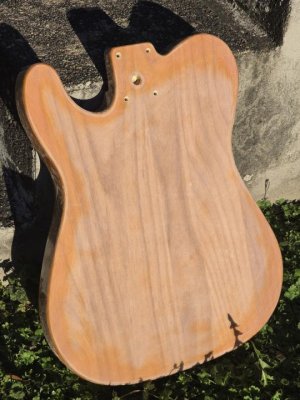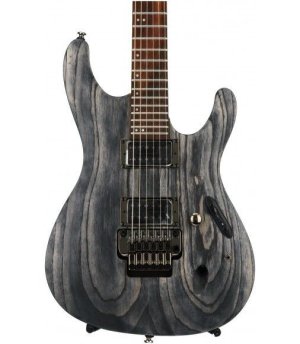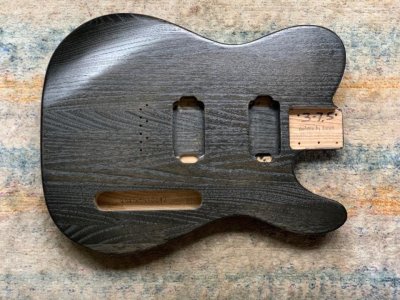Chistopher
malapterurus electricus tonewood instigator
A friend of mine gave me an cheapo Tele body in a translucent butterscotch blonde. I'm looking to refinish it purely for the practice. Chemical stripper is off the table, and I'm assuming a heat gun would risk the integrity of the veneer, so I think I'm stuck with sanding.
This would be my first axe that I'm shooting for a stain, so my usual pisspoor sanding method isn't going to cut it. I'm assuming power sander for the front, sanding block for the sides, but what about the fillet? How do I sand the edges without going through them? My guess for paper is 60 grit until all the color is gone, then 120 to flatten out the rough spots, then 320 to smooth it out?
Any advice for staining either? I've never done it before
This would be my first axe that I'm shooting for a stain, so my usual pisspoor sanding method isn't going to cut it. I'm assuming power sander for the front, sanding block for the sides, but what about the fillet? How do I sand the edges without going through them? My guess for paper is 60 grit until all the color is gone, then 120 to flatten out the rough spots, then 320 to smooth it out?
Any advice for staining either? I've never done it before



